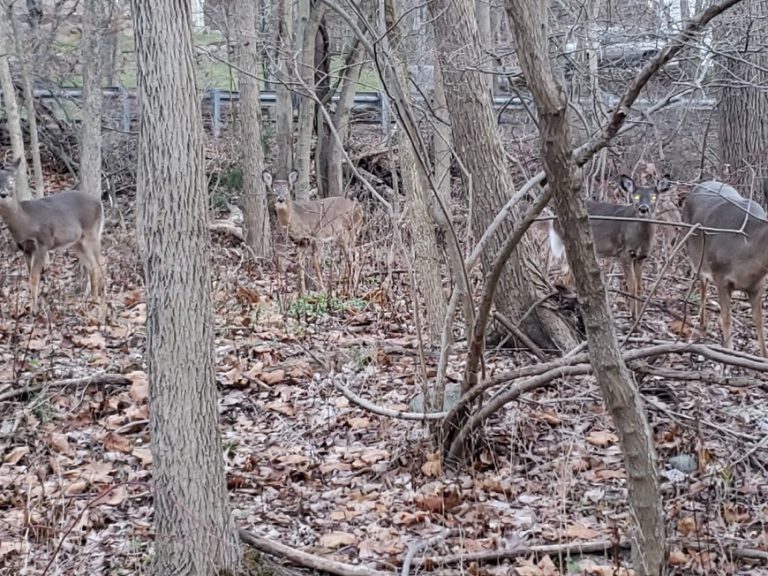Deer are beautiful, graceful animals and an important part of a healthy ecosystem when they occur in sustainable numbers. Unfortunately, New Jersey’s deer population is out of control and is impacting our pocketbooks in many ways. This article examines some of the financial impacts of the failure to control the burgeoning deer population.
Let’s begin with our farmers. Anyone who gardens on a property without an impenetrable fence can easily understand and empathize with losses farmers might be sustaining. Are you trying to grow a few vegetables just for your family or have you invested in plants for your landscape? Then imagine how farmers, whose livelihoods are totally dependent on producing food, suffer. A 2018 study done by Rutgers wildlife specialists and others found that 36% of New Jersey farmers reported crop losses of more than $10,000 each, with some reporting losses of more than $50,000. Statewide, New Jersey farmers report $15 million in annual losses of food and nursery crops. As quoted in Lancaster Farming, Peter Furey, executive director of the New Jersey Farm Bureau, says this figure is likely a very low estimate. “The total value of commodity production in New Jersey is $1.1 billion annually. If you figure a 10% loss, which is very conservative, that’s $101 million in losses.”
These economic effects are further multiplied as growers shelled out hundreds of thousands of dollars in deer-control measures such as fencing, as well as the labor costs of executing these precautions—which are often ineffective. For many farmers, the cost of erecting a suitable fence to protect many acres of crops is prohibitive. A Rutgers study found that
more than one-third of New Jersey farmers had stopped growing preferred crops because of deer and that they completely abandoned fields 25% of the time. Consumers eventually pay for these losses when the costs are passed on. Consider that when our farmers produce less food, produce in demand has to be brought in from farms located further away, increasing the costs.
Gardeners, too, often give up or stop buying plants that they know deer will destroy. Think of what this does to the economy of the “Garden State” when fewer people spend money at local nurseries.
Another way deer drain our wallets is through motor vehicle accidents. In the 2011-2012 period, there were over 31,000 deer-vehicle collisions in New Jersey alone. The chance of a motorist hitting a deer is 1 in 191. According to NJ.com, in 2017 the Township of Wayne was number 12 in the state with 125 deer-vehicle accidents. The State Farm Insurance Company reported the average repair cost of these collisions was $4,000 per incident in 2016. These numbers reflect only the financial costs of these incidents and don’t consider the impact of injuries and deaths due to these accidents. Deer-vehicle collisions include commercial and passenger vehicles and school buses. The cost of these accidents is passed on to everyone through higher insurance rates.
New Jersey residents can’t continue to ignore these problems. They will continue to adversely impact our farmers, gardeners, nurseries, garden centers, and every taxpayer. If the problem is not addressed, how much longer will we be able to call ourselves the Garden State?

